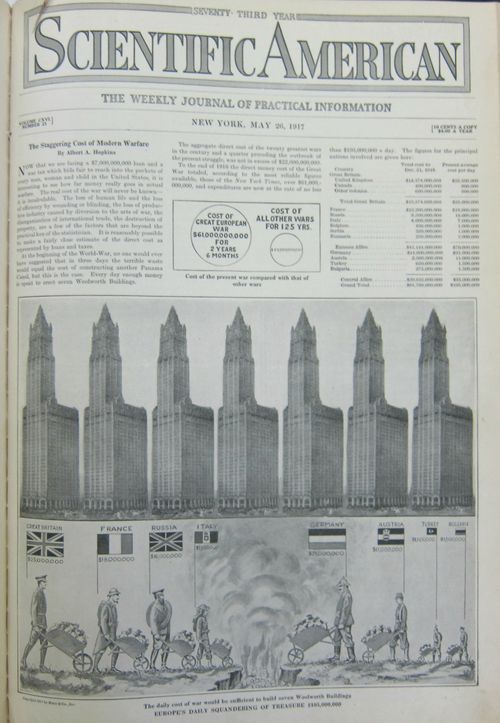JF Ptak Science Books Quick Post
The first thing that a reader in the U.S. will probably notice in this graphic is that there is no "United States" entry--that is because the U,S, had only entered the war seven weeks before this image was made after having been steadfastly neutral for the war's first 2.5 years. That said the daily cost of war was made accessible and understandable to the readership of the Scientific American by putting costs in terms of the construction of the then-tallest building in the world, the Woolworth Building (the world record holder for height from 1911-1930).
Overall, for the eight major combatants, the total daily cost of the war was the equivalent of the cost for building eight Woolworth Buildings, every day. At the end of the war that would have been a stack of Woolworth Buildings that was 30 x 30 Woolworths by 150 Woolworths tall.
And just for perspective, the daily cost for Great Britain was 25 million pounds in 1917, which using the B of E calculator for inflation, would be about 1.2 billion pounds today (per day). This is roughly in league wit the cost of U.S. involvement in the 2003 Iraq war at about 700 million dollars a day (since 2003).
There are many ways of looking at this data, though the Scientific American wanted to approach the expenditure in terms of gigantic piles of waste.
- See also an earlier post here on data visualization and the measuring of things with the Woolworth Building: http://longstreet.typepad.com/thesciencebookstore/2016/06/data-vizualization-automobiles.html
[Source: Scientific American, May 26, 1917.]




Comments